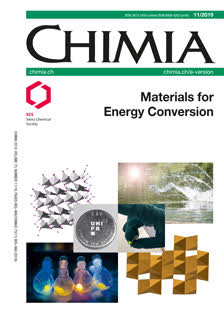Testing a Silver Nanowire Catalyst for the Selective CO₂ Reduction in a Gas Diffusion Electrode Half-cell Setup Enabling High Mass Transport Conditions
DOI:
https://doi.org/10.2533/chimia.2019.922PMID:
31753073Keywords:
Co2 reduction, Gas diffusion electrode, Silver nanowire catalystAbstract
In this work, we discuss the application of a gas diffusion electrode (GDE) setup for benchmarking electrocatalysts for the reductive conversion of CO2 (CO2RR: CO2 reduction reaction). Applying a silver nanowire (Ag-NW) based catalyst, it is demonstrated that in the GDE setup conditions can be reached, which are relevant for the industrial conversion of CO2 to CO. This reaction is part of the so-called 'Rheticus' process that uses the CO for the subsequent production of butanol and hexanol based on a fermentation approach. In contrast to conventional half-cell measurements using a liquid electrolyte, in the GDE setup CO2RR current densities comparable to technical cells (>100 mA cm–2) are reached without suffering from mass transport limitations of the CO2 reactant gas. The results are of particular importance for designing CO2RR catalysts exhibiting high faradaic efficiencies towards CO at technological reaction rates.
Downloads
Published
Issue
Section
License
Copyright (c) 2019 Swiss Chemical Society

This work is licensed under a Creative Commons Attribution-NonCommercial 4.0 International License.







